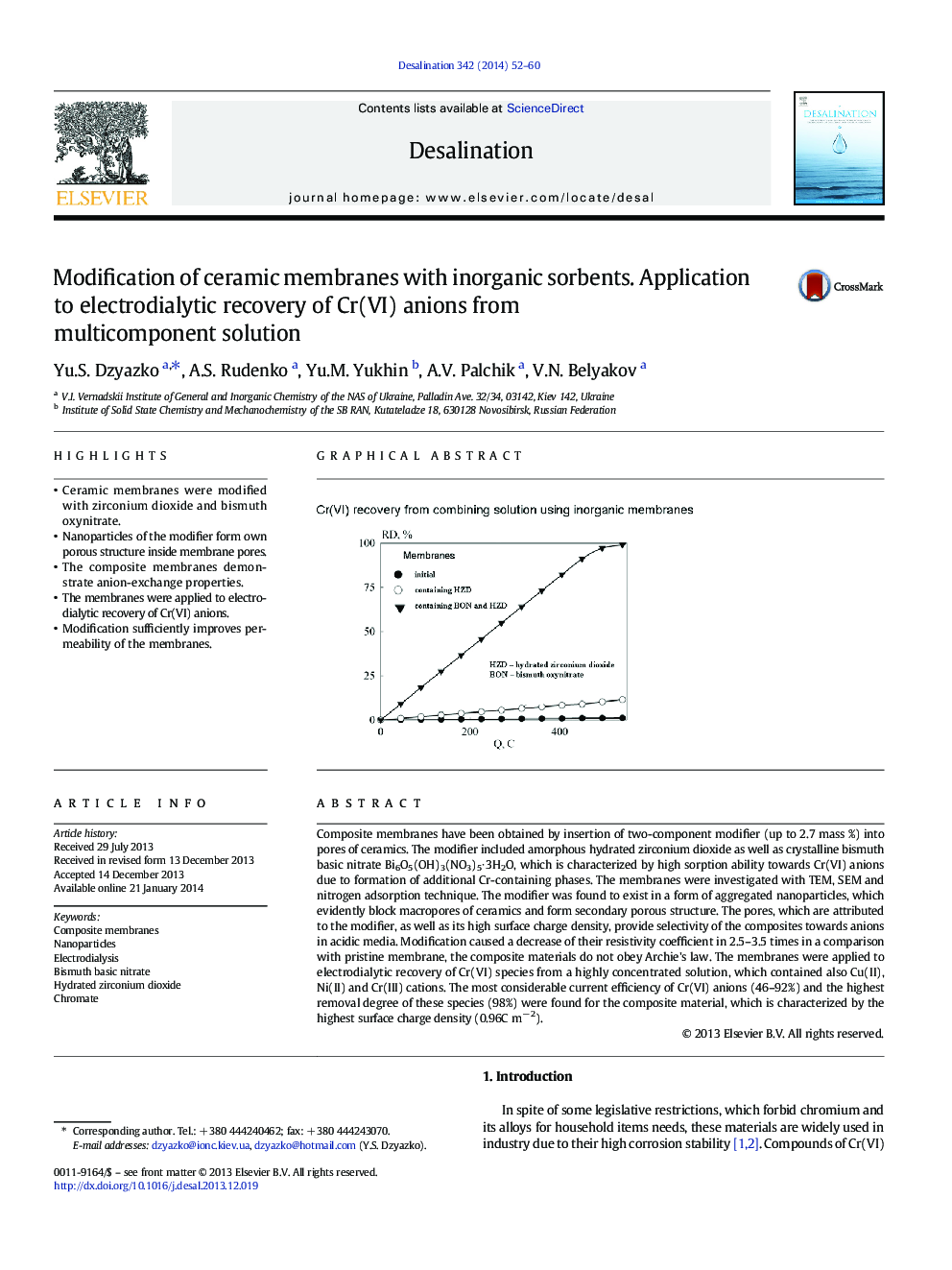| Article ID | Journal | Published Year | Pages | File Type |
|---|---|---|---|---|
| 623626 | Desalination | 2014 | 9 Pages |
•Ceramic membranes were modified with zirconium dioxide and bismuth oxynitrate.•Nanoparticles of the modifier form own porous structure inside membrane pores.•The composite membranes demonstrate anion-exchange properties.•The membranes were applied to electrodialytic recovery of Cr(VI) anions.•Modification sufficiently improves permeability of the membranes.
Composite membranes have been obtained by insertion of two-component modifier (up to 2.7 mass %) into pores of ceramics. The modifier included amorphous hydrated zirconium dioxide as well as crystalline bismuth basic nitrate Bi6O5(OH)3(NO3)5∙ 3H2O, which is characterized by high sorption ability towards Cr(VI) anions due to formation of additional Cr-containing phases. The membranes were investigated with TEM, SEM and nitrogen adsorption technique. The modifier was found to exist in a form of aggregated nanoparticles, which evidently block macropores of ceramics and form secondary porous structure. The pores, which are attributed to the modifier, as well as its high surface charge density, provide selectivity of the composites towards anions in acidic media. Modification caused a decrease of their resistivity coefficient in 2.5–3.5 times in a comparison with pristine membrane, the composite materials do not obey Archie's law. The membranes were applied to electrodialytic recovery of Cr(VI) species from a highly concentrated solution, which contained also Cu(II), Ni(II) and Cr(III) cations. The most considerable current efficiency of Cr(VI) anions (46–92%) and the highest removal degree of these species (98%) were found for the composite material, which is characterized by the highest surface charge density (0.96C m− 2).
Graphical abstractFigure optionsDownload full-size imageDownload as PowerPoint slide
